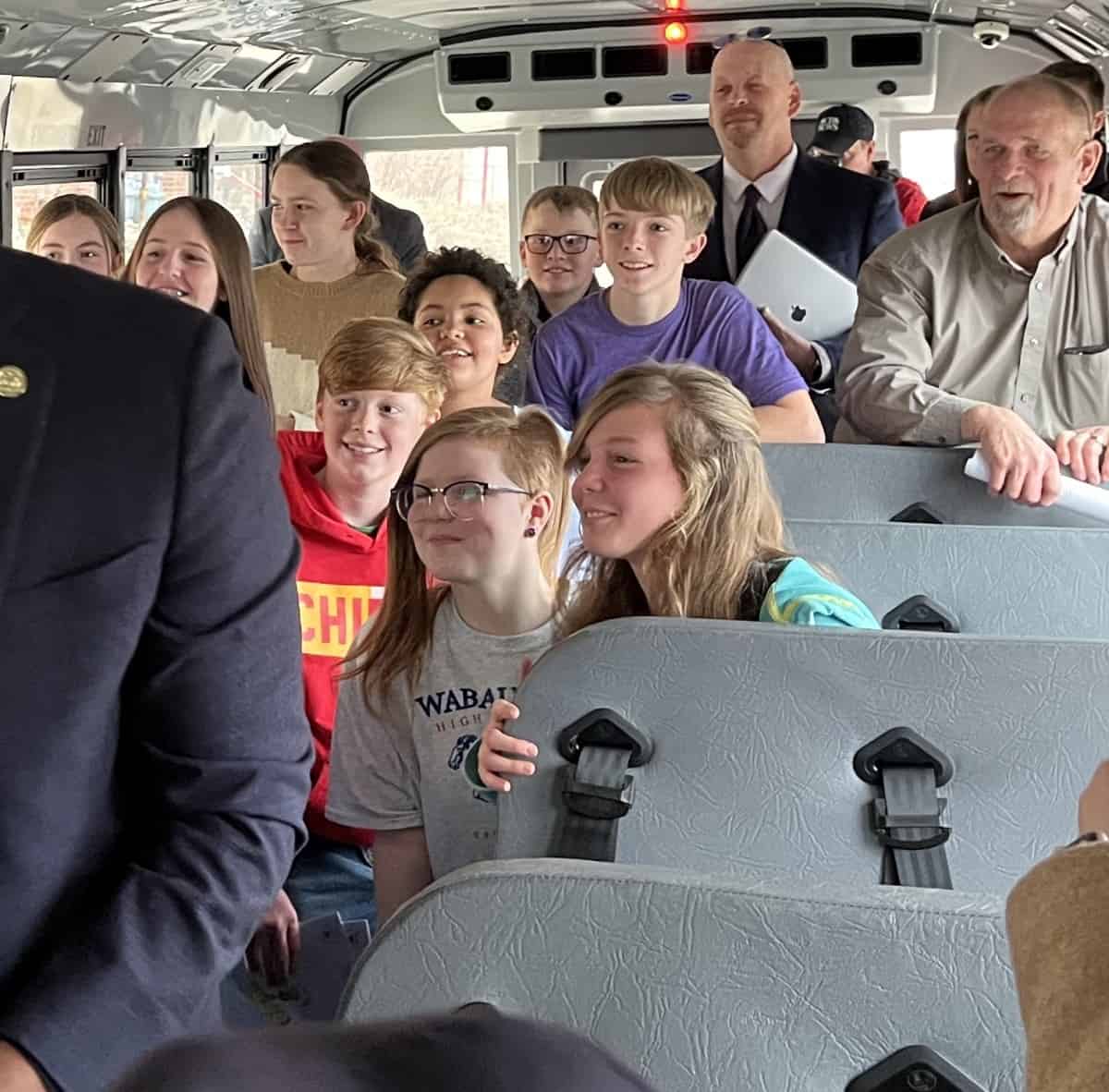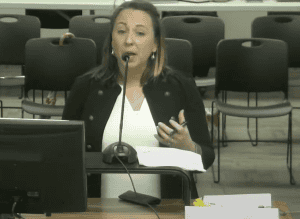Environmental Protection Agency Administrator Michael Regan was joined by USD 329 officials and community members in Alma as the school district unveiled two new additions to its transportation fleet — the state’s first electric school buses.

The district received a $790,000 grant from the EPA for the purchase of the electric school buses built by Lion Electric Company in Channahon, IL. The grant is part of the Bipartisan Infrastructure Law approved and signed into law last year. Some 400 schools nationwide were approved to share nearly $1 billion in grants. $6.6 million is earmarked for the State of Kansas, and Wabaunsee is one of six school districts receiving the “clean school bus funding”:
- Caney Valley Unified School District 436 – Two school buses for $790,000
- Halstead Unified School District 400 – Three school buses for $1,185,000
- Southern Lyon County Unified School District 252 – Four school buses for $1,490,000
- Sterling Unified School District 376 – Two school buses for $790,000
- Waconda Unified School District 272 – Four school buses for $1,580,000
The 2022 Clean School Bus Program prioritizes low-income, rural, and tribal communities. It affords access to more funds for electric school buses and electric vehicle infrastructure, such as on-site charging stations, for schools in areas that are the most in need.
USD 329 has an enrollment of just under 400 students.
From its press release, EPA touts its initiative:
“The Clean School Bus Program will reduce greenhouse gas emissions, save money for school districts, and produce cleaner air. Diesel air pollution is linked to asthma and other conditions that harm students’ health and cause them to miss school, particularly in communities of color and tribal communities. Phasing out these diesel engines will ensure cleaner air for students, bus drivers, and school staff working near the bus loading areas, and the communities through which the buses drive each day. The reduction in greenhouse gas emissions from these bus replacements will also help to address the outsized role of the transportation sector in fueling the climate crisis. The program will also save school districts money as they upgrade school bus fleets, replacing older, heavily polluting buses with brand new clean school buses, while freeing up needed resources for schools.”
 The presentation featured a ride-along for officials, media representatives, and selected students who were enthusiastic about their daily commutes in the new vehicle.
The presentation featured a ride-along for officials, media representatives, and selected students who were enthusiastic about their daily commutes in the new vehicle.
Later, EPA officials, including Administrator Regan, conducted a roundtable discussion with city, state, and school officials, representatives of electric power organizations, and The Sierra Club to discuss the benefits of clean power. The event concluded with a joint news conference in front of one of the buses.
Nate Baguio of Lion Electric points out the aesthetics and safety features of the vehicle:
“What we’re looking at is the reimagining of the yellow school bus. The composite material on the skin of the bus will still be yellow in 15 years, as opposed to an oxidized, rusted steel bus. The roof is a single piece of material to avoid issues with rivets rusting and leaking. The aisles are wider than a normal school bus so an adult doesn’t have to turn sideways getting to and from their seat. The hood is shorter and tapered and the driver’s seat is higher to allow for expanded sight lines. GPS and backup cameras are included; there’s even a light above the door to indicate the battery is fully charged. The vehicle fully meets all state and federal safety standards.”
Among the technical specifications of the electric school bus fleet per the Lion Electric website:
“The Lion grant team walked me through the process; we submitted the application, and shortly after, we heard back from EPA that we were awarded the funds. It just happened really quickly”
Dr. Pitsch said the district’s consideration was simple:
“What we were trying to do was make a good decision about resources. What’s important to us is moving kids safer, more comfortably to and from school. If the district takes a little pressure off its budget with resources provided by the EPA, and saves money in fuel costs, it hits all the notes; it’s a win for everybody.”



